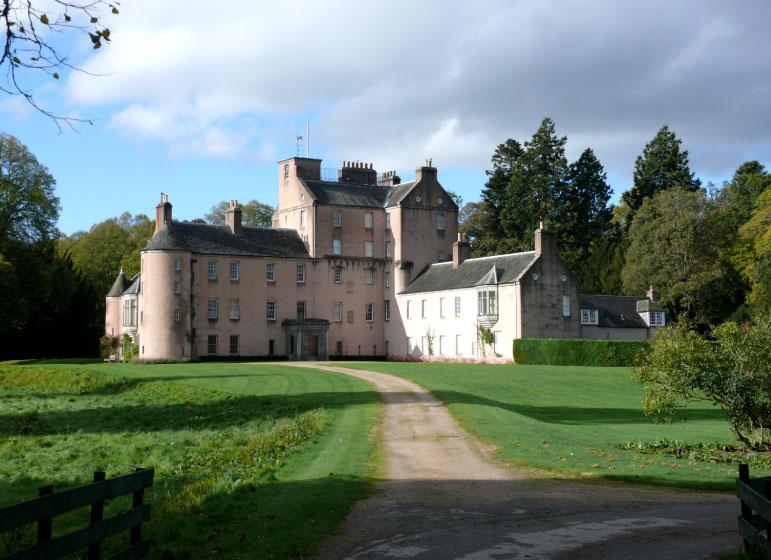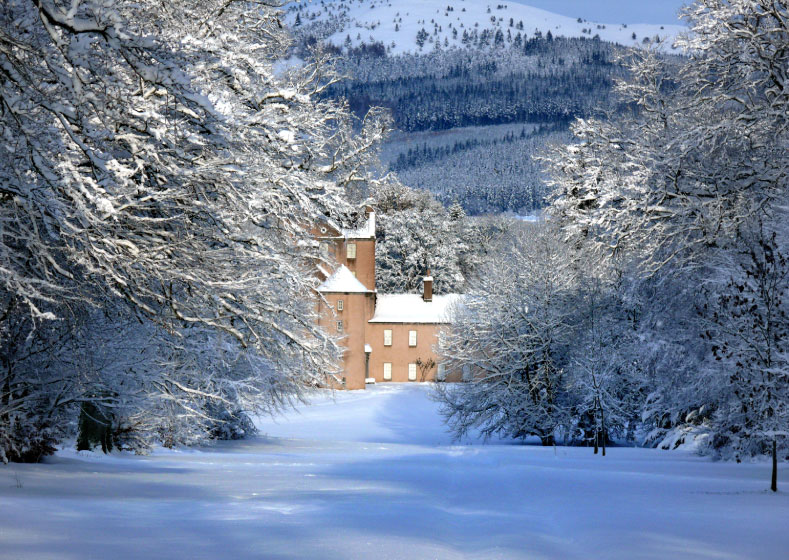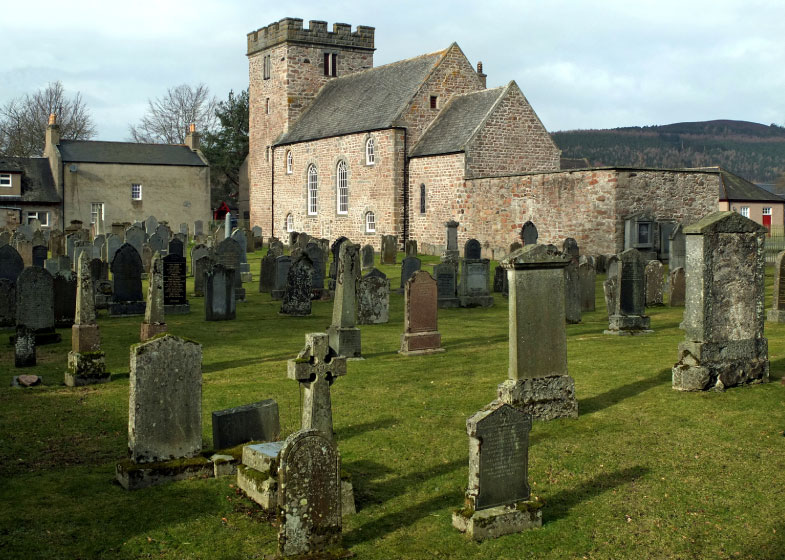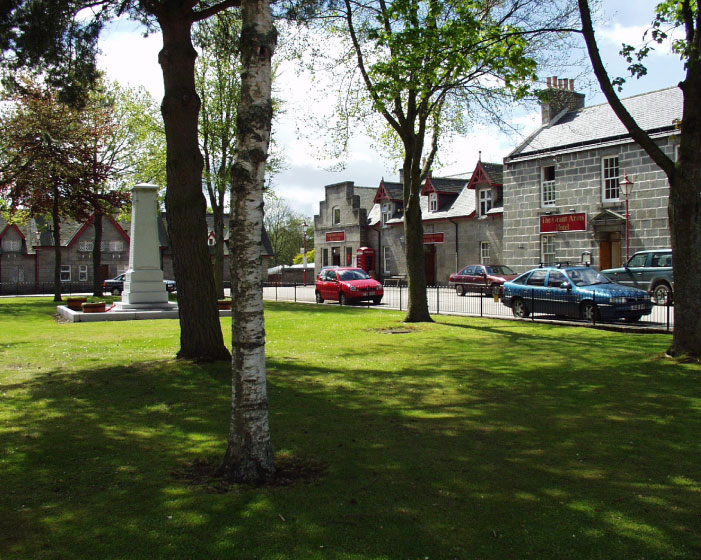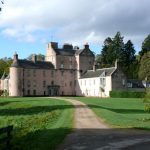Monymusk House
[dropcap]T[/dropcap]he site on which Monymusk House sits had foundation as far back as 1078. The Culdees of Munimusc are recorded as inhabiting the site in 1170. The present building is thought to have parts dating from 1205 and 1210, from when an Augustinian priory built by Gilchrist, Earl of Mar is believed to have been on the site.
The house and estate was bought by the Forbes family in the 1560s who built the central part of the house.
The house was bought by Lord Cullen, a Grant Lawlord in 1712 and his son Sir Archibald Grant (2nd Bt.) – an agricultural improver – transformed the land and established a planned village for the estate workers. The village was largely rebuilt again in 1840.
The ground floor room of the round tower is known as Meg’s Hole. The Grant family version of the tale is that Meg was a witch who was later burned, but the Forbes’ version relates that Meg was a Forbes wife, who saw a band of men coming down the drive while her husband was out. Rather than face a fate worse than death, she is supposed to have impaled herself on a meat hook hanging from the ceiling of the small room.
A carving of an elephant can be seen on the side of the house which was made by a well-travelled stone mason. During one of his journeys he had seen ‘a muckle beastie with a tail at either end’. As nobody believed such an animal could exist, he placed a carving of one at the top of the tower to show future generations what he had seen.
The ancient church of St Mary’s, Monymusk is situated in the village square. According to legend, Malcolm III prayed here before meeting MacBeth at the Battle of Lumphanan in 1057. Malcolm swore that if he was victorious he would return and build a tower for the church. He used the tip of his spear to outline the tower site.
As history records, Malcolm defeated MacBeth at Lumphanan, and honouring his vow, built the Norman style tower which still stands today. The tower originally stood 74 feet high, but was lowered to its current height of 51 feet. Inside the church are several ancient carved stones, including a Pictish symbol stone known as the Monymusk Stone. This is a 7 foot high slab of granite, carved with a Celtic cross above a step symbol and a traditional Pictish double-disc. The stone was found at Nether Mains Farm and later removed to Monymusk House, where it stood in the billiard room! It was moved to the church in 1978. Even older are a pair of 6th century engraved burial stones.
A field half a mile East of Monymusk House beside the River Don, known as the Camp Field, was reputedly the camping ground of Robert Bruce’s army before the Battle of Inverurie in 1308.
